Honda Civic Type R vs. Acura Integra Type S Comparison Test: May the best Honda win

It’s a cop-out move to say there won’t be a loser in a comparison test between two cars, but when the pair is as similar to each other as these are here, it wouldn’t be a surprising conclusion. But we’re not cop-outs, and there is a winner to be picked between the Honda Civic Type R and Acura Integra Type S.
Anybody shopping for one should deeply consider the other. Even if you’re a hardcore Type R homer, you’re guaranteed to find purpose and positives in the Type S. Strangely, it’s the Acura that comes across as more boy-racer in person. Sure, it doesn’t have a big wing, but the stuck-on-looking widebody, muscular hood vent, dramatized rear diffuser and available bronze wheels lend it a hard edge that the smoothed-over Type R just doesn’t match. The Civic speaks performance more subtly with flowing fenders, a smaller grille and simplified design language. Everything is purposeful, and it scratches a certain type of itch the Type S doesn’t quite reach.
That Honda and Acura offer both of these cars at all is a blessing in itself – there wasn’t a Civic Type R in the U.S. lineup prior to 2017 and you have to go back to 2001 for the last Integra Type R. To say it’s a good time to be a Honda enthusiast would be an understatement.
2nd Place: Acura Integra Type S
The Type S doesn’t earn its second-place status due to it being demonstrably worse to drive than the Civic Type R. Arguably, the Type S is the superior vehicle to drive when you’re away from a racetrack or pristine pavement. No, the main reason it fell was because it didn’t quite live up to the promise of being a more daily-driver-ready, “luxury” version of Honda’s hottest hatchback.
The Integra Type S has power seats, but not the memory-programmable ones that come on the non-Type S. It uses the bizarre four-seat configuration of the Type R instead of making itself a more useful five-seater like other Integras. The backseat experience is hardly luxurious either, as Acura doesn’t include rear vents or USB ports for charging, limiting its use as a kid hauler. There’s no sunroof available, not even as an option like on the standard Integra. You could even make an argument that the Integra’s interior trim isn’t as nice as the Type R’s, as Acura plasters piano black and a plasticky gray material all over versus the Type R’s sweet metal weave gear surround and flat black dash trim accented by racy red LEDs.
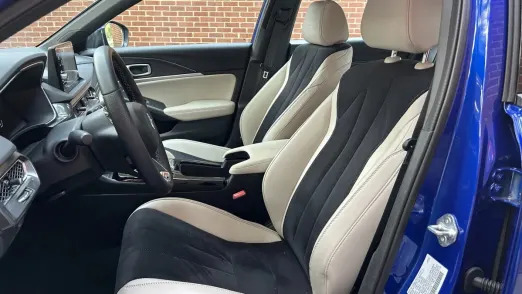
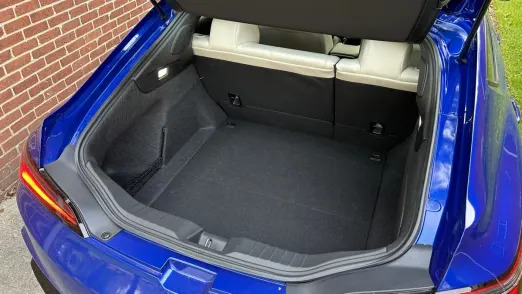
The price delta between the two cars is $6,105, which buys you five extra horsepower, the aforementioned power driver’s seat, heated front seats (covered in leather and suede), a head-up display, ELS 16-speaker audio system and full LED exterior lights. Of course, it drives a little differently, too, with an improved ride via a damper tune that makes everyday driving more civil. The softer tune (in every drive mode) versus the Type R hardly seems to lower its handling talent on the road, though it makes getting to and from the canyons more pleasant.
Bumpier roads are dispatched with less violent bouncing or skipping around, making the car easier to drive quickly in those situations. We didn’t bring the pair to a track, but the difference there in ride control is bound to be minute, with the Type R taking a slight edge due to its stiffer suspension and big wing for greater stability.
You may not notice the Acura’s extra five horsepower (its 2.0-liter turbocharged inline-four produces 320 hp and 310 pound-feet of torque), but its meatier torque curve in the low- and mid-range means you might find it lighting up the front tires earlier or exhibiting a smidgen more torque steer accelerating through a corner. It’s not necessarily a bad thing, but these are the tiny differences you notice when driving the two back-to-back on the same roads.
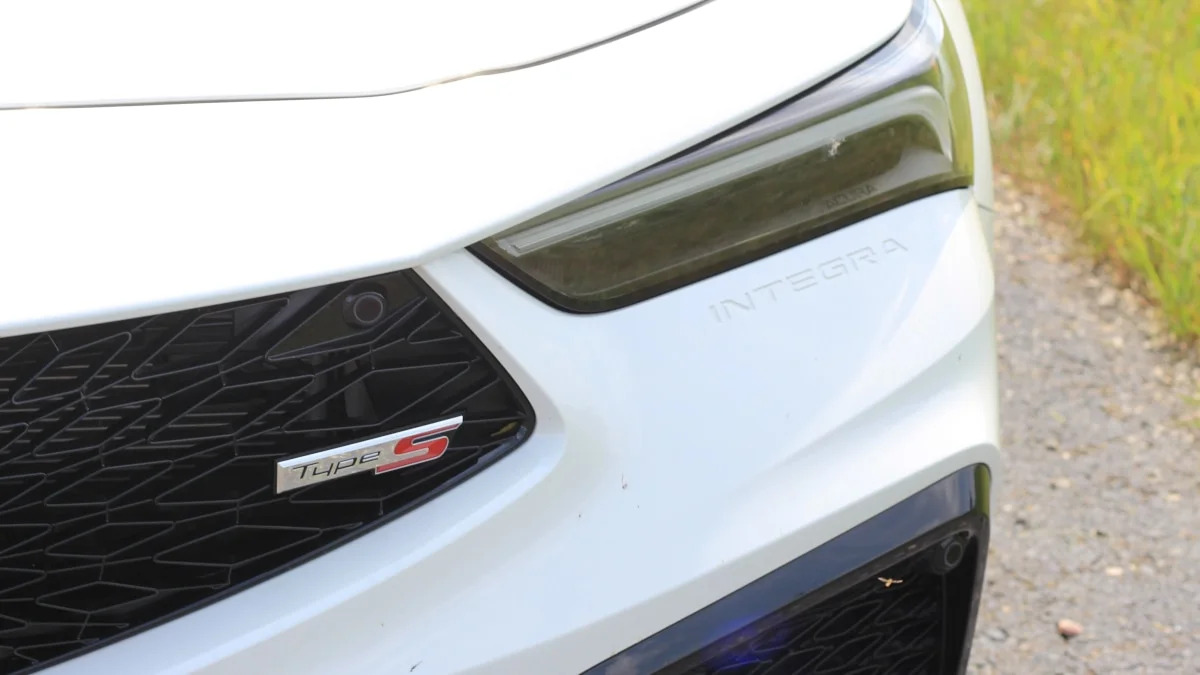
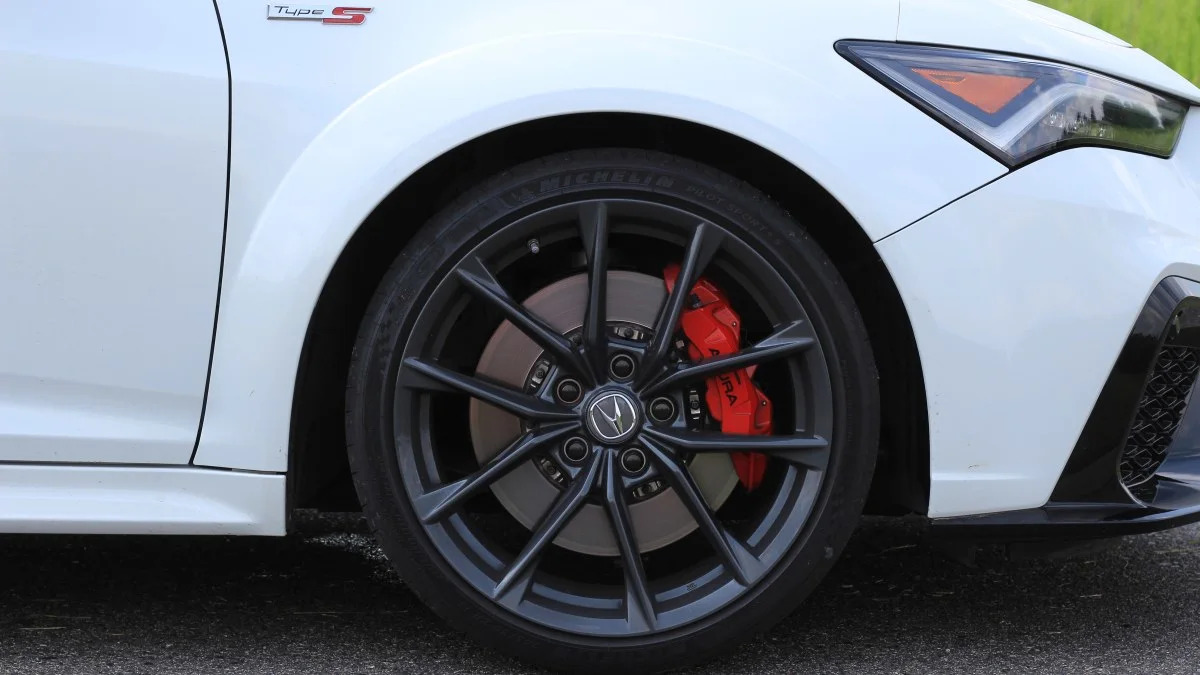
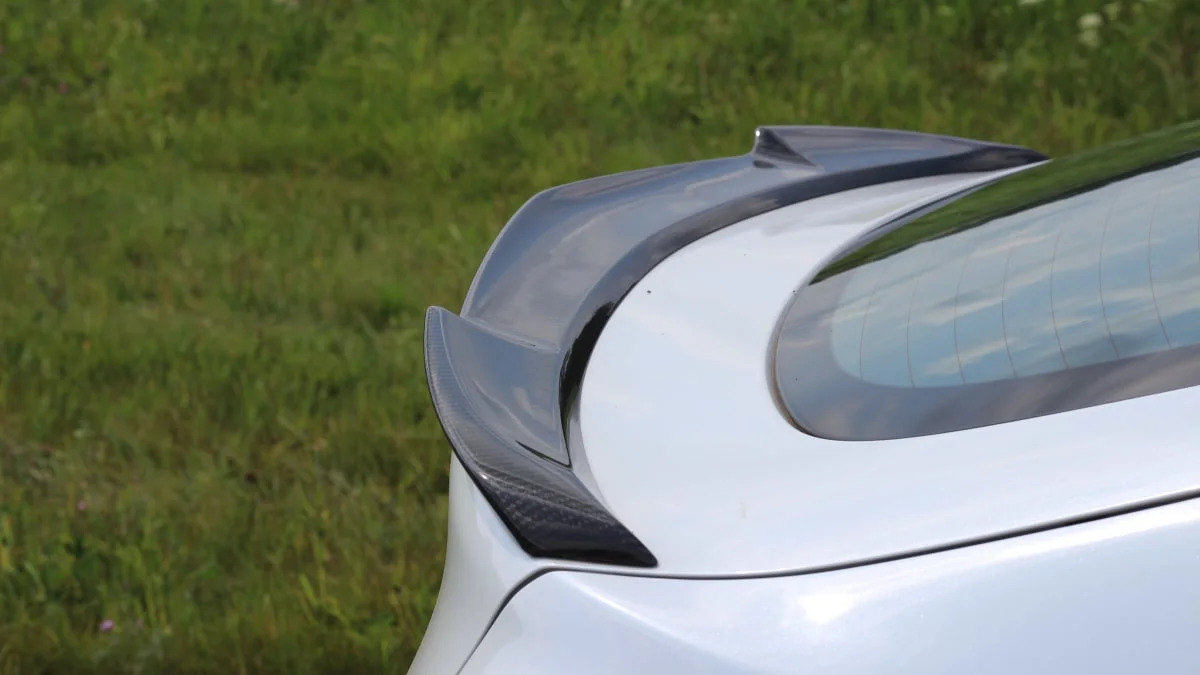

What is abundantly clear right away is how much better the Type S sounds from the factory. Acura fits a more aggressive exhaust and pairs it with an engine tune that produces an array of pops and bangs when you switch it into the more aggressive drive modes. The Type R just sounds boring in comparison.
We’d be remiss if we didn’t mention the greater development costs and attention to detail paid to the Type R’s exterior design. Honda went out of its way to engineer a new rear door on the Type R that perfectly flows with its much wider rear fenders, creating a seamless and clean look for those rear hips. Acura, on the other hand, went full Hellcat with the Type S and quite literally stuck on some wide-body flares to the same rear door that’s fitted to any other Integra. It comes off as cheap compared to the Type R’s far more elegant solution, and we’d wager Acura’s design team wishes it were able to pull off the same feat.
First Place: Honda Civic Type R
The added gravitas of driving a Type R smacks you in the face from the moment you slide into the high-bolstered buckets that put the Integra’s more sedate seats to shame. Its red carpet, red seats, red Honda badge and the numbered plaque on the dash ensure you know this front-drive hot hatch isn’t like other Hondas. Then you fire the car up, and the hits keep coming. Shift lights arc across the top of the instrument cluster in race car style, and a beeeep plays out conveniently at redline in case you find yourself so engrossed in the handling that you forget to find the next gear. A unique digital cluster view amps up the atmosphere with a horizontal tachometer and all the vital temperature data one might need on the track (not to mention the LogR app that Acura doesn’t offer).
These are all major pluses for the Type R over the Type S, and for the hardcore enthusiast, perhaps convincing enough to make you pass up the Integra’s various niceties. The Civic hardly needs those “upgrades” anyway, as the suede seats don’t get cold like leather in winter, and Honda installs a very respectable Bose audio system in the Type R that’s great to listen to already.
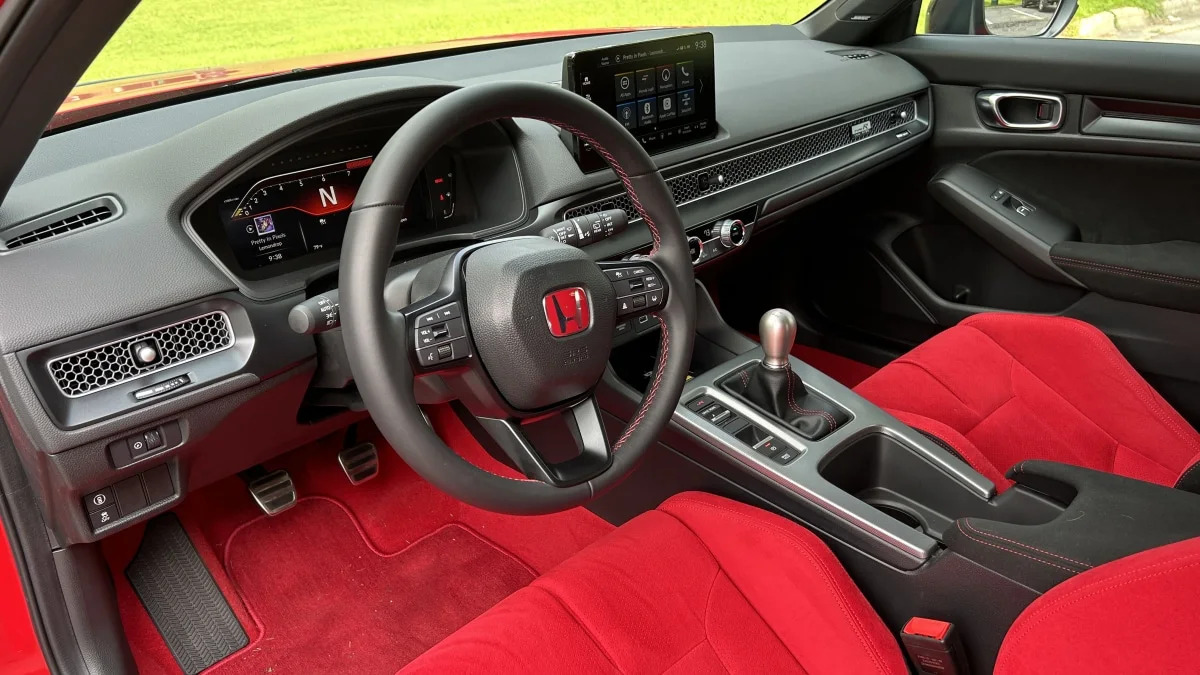
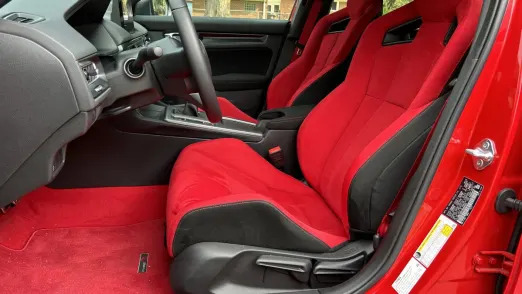
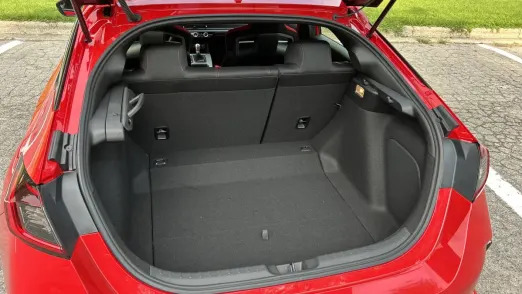
But these cars are about driving, and the Type R does that part better than any other front-drive production vehicle on the planet. The transmissions might be identical, but the Type R’s knob and shift feel is a bit sturdier and solid than the Type S shifter. Both of these cars are about as serious and unflappable in corners as it gets, though it’s impossible to miss the slight bit of added stability from the Type R in long sweepers. The Honda’s aero package is visibly far more intense than the Integra’s, and we wouldn’t doubt if it’s making the Type R feel just that little bit more glued to the road, as it will surely do on the track.
The only area where the Type R struggles compared to the Integra is on particularly bumpy stretches that show just how stiff the suspension is. It’s here that we’d rather be wheeling the Type S to better sop up the big road undulations and imperfections that end up jostling you around in the Type R. You don’t necessarily lose tire contact patch and grip, but it sure does shake a driver’s confidence to drive quickly.
Sound will always be subjective, and it could even be a dealbreaker between these two. The Type R’s exhaust sounds excellent outside the car, but you won’t hear anything over the blaring simulated engine noise inside. It’s just not as enjoyable to listen to as the crackly and rorty tone exiting the Acura’s triple tips. If sound is what you want, though, that’s easily solved with an aftermarket exhaust that’ll out-trumpet the Integra’s stock pipes.
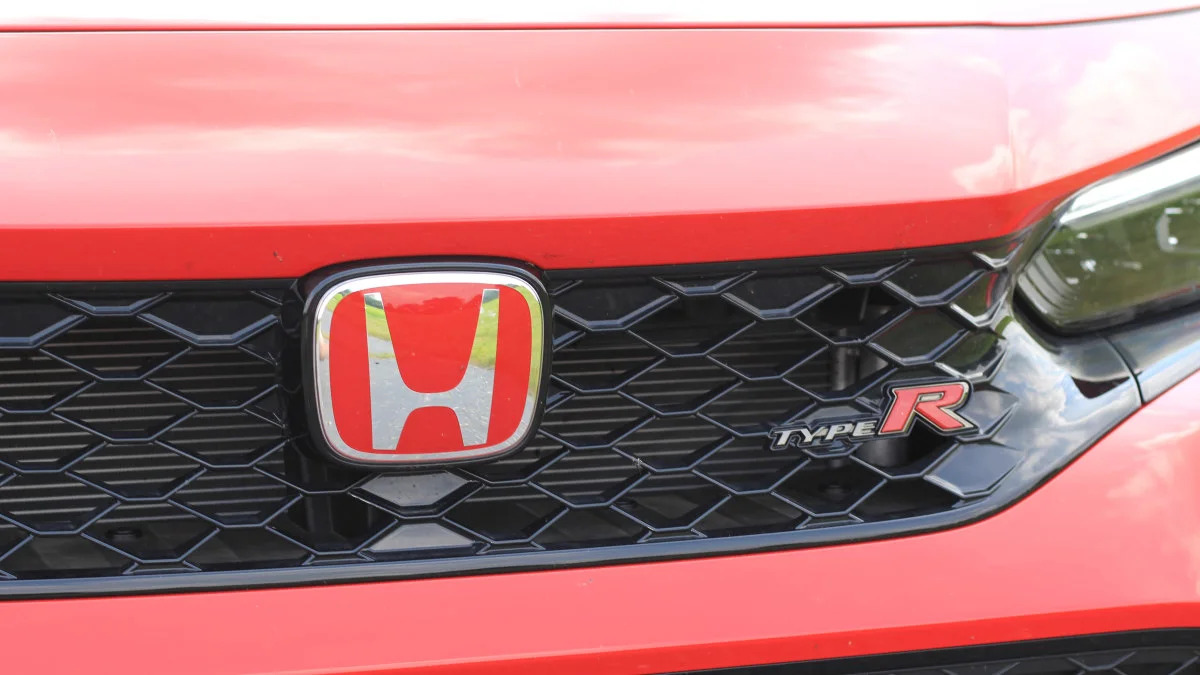
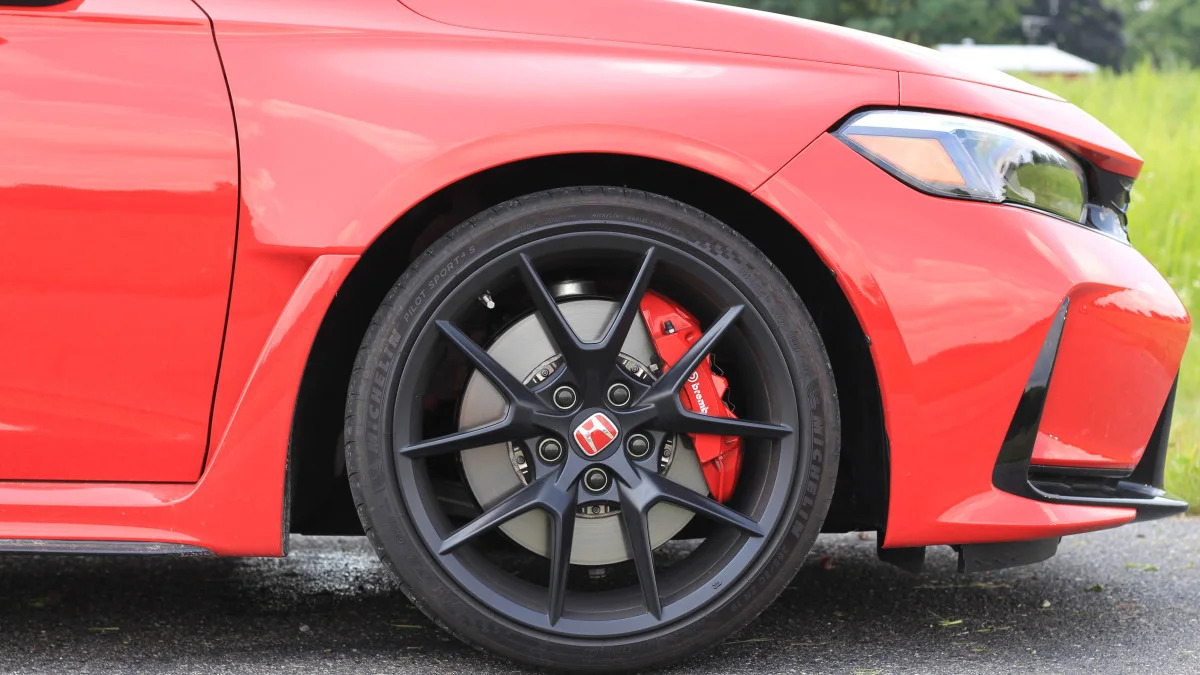
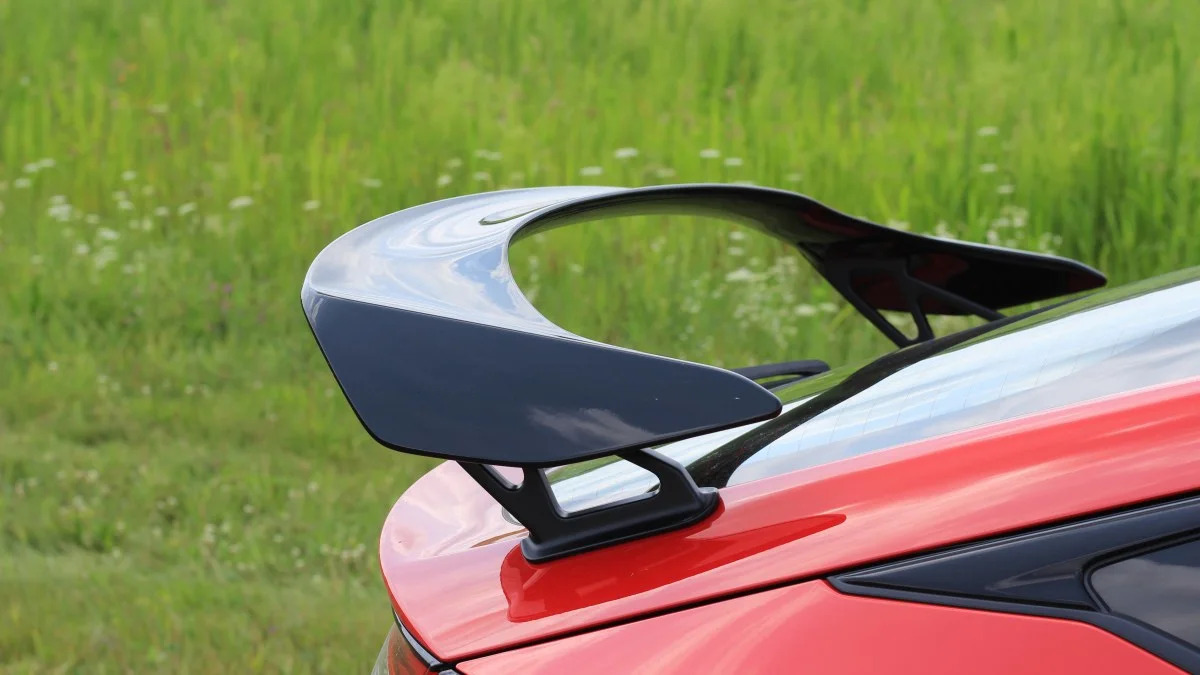
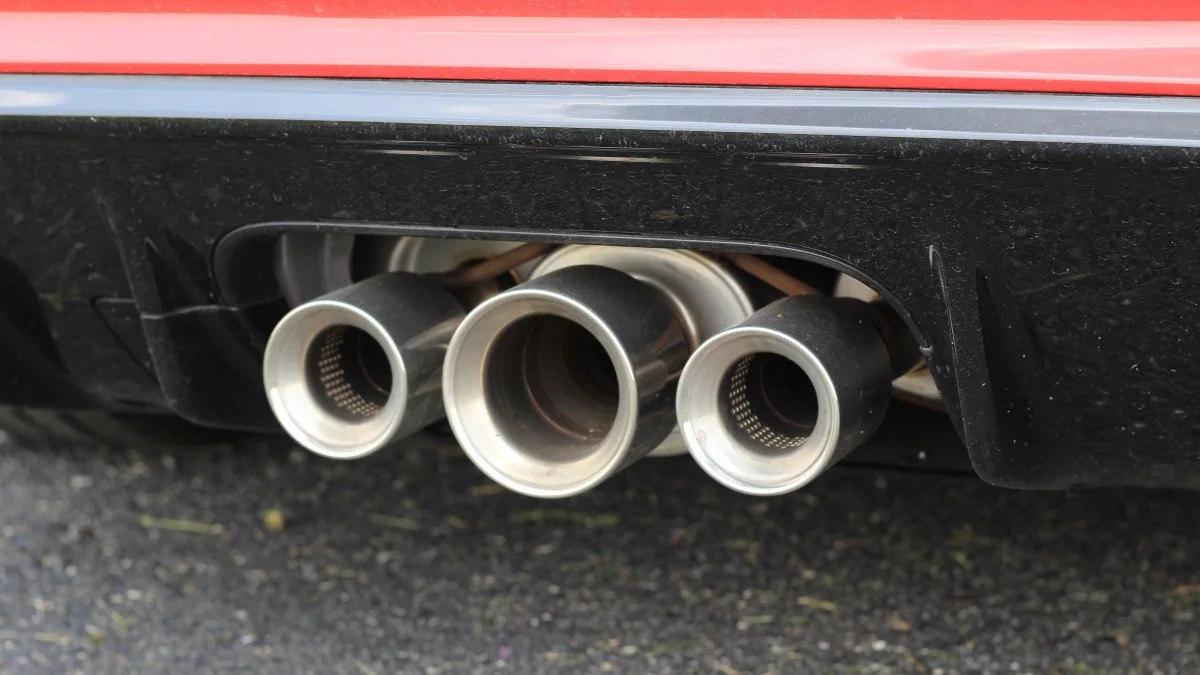
These two are so similar to drive that the only way you’ll end up liking one’s driving characteristics more than the other is by nit-picking minute (sometimes ridiculous) details. The Civic’s stiffer dampers make it feel the tiniest bit sharper on a smooth-as-glass road. The brakes? Well, they’re exactly the same and you won’t notice a difference. Sticky Michelin Pilot Sport 4S tires give both cars an equal amount of grip, and good luck trying to find a difference in acceleration. The Integra has five extra horsepower, but it also weighs 31 pounds more. You’d be hard-pressed to tell a difference in a race without a stopwatch. Both cars use the same aggressive limited-slip differential that yanks you through a corner and brake-based torque vectoring that helps pivot you through any twist and turn with alacrity. Visibility out of the Civic is a smidgen better, but again, nit-picking.
What this comparison comes down to more than anything else is value, looks and just how spicy you want your FWD Honda experience to be. If you can afford both, buy the one you prefer the looks of the most. Objectively, though, the Type R’s lower starting price makes it tough to give the nod to the Integra – especially when the Civic entices you with those beautiful and near-perfect red seats. And while many are unlikely to care, the Type R’s hatchbacked cargo area is superior to the Integra’s. Not only is it bigger, but the Acura’s annoyingly high liftover height makes it hard to hoist things inside.
If Acura added a few more luxury features and gave it some proper bucket seats, this conversation could be a little closer to a true tie or perhaps even an Integra victory. And if Honda continues to tick the Type R’s price upwards, the value proposition could dwindle further. But Honda and the Type R deserve the nod today, which only seems fitting. The Type R should be the best front-drive enthusiast vehicle in the world, and it fulfills the prophecy.







